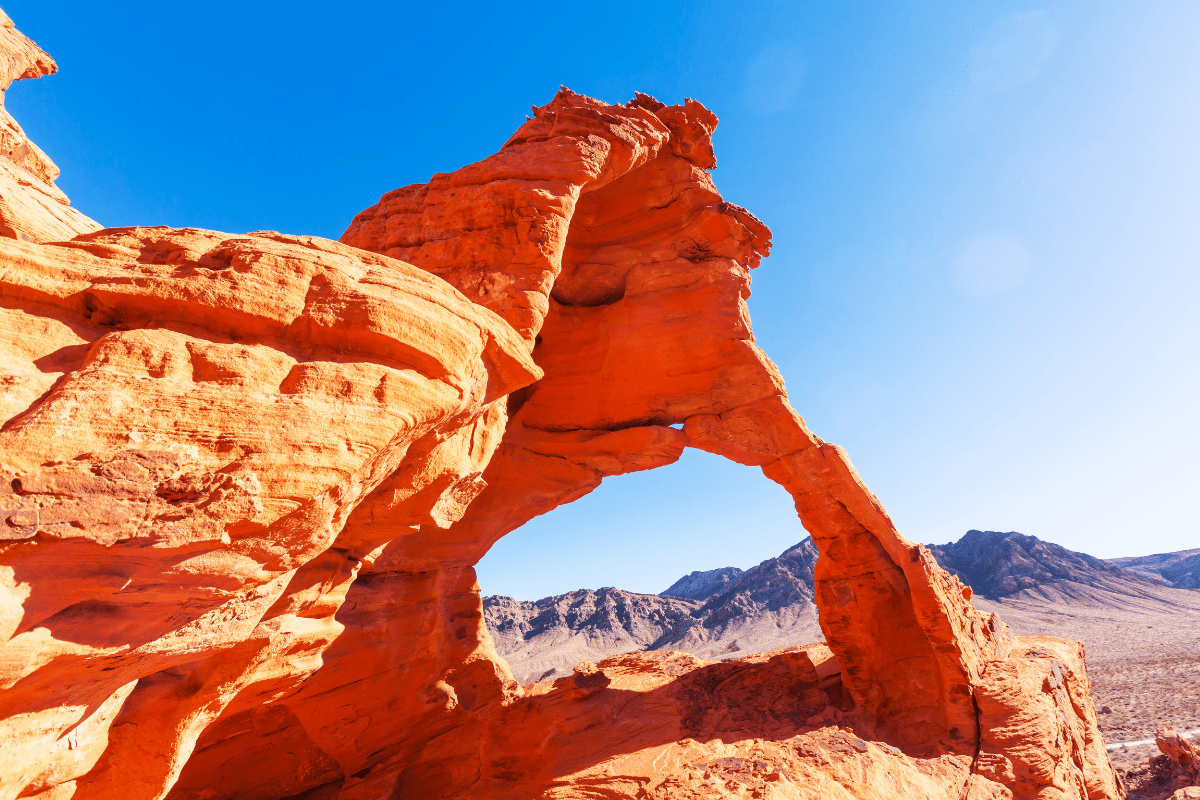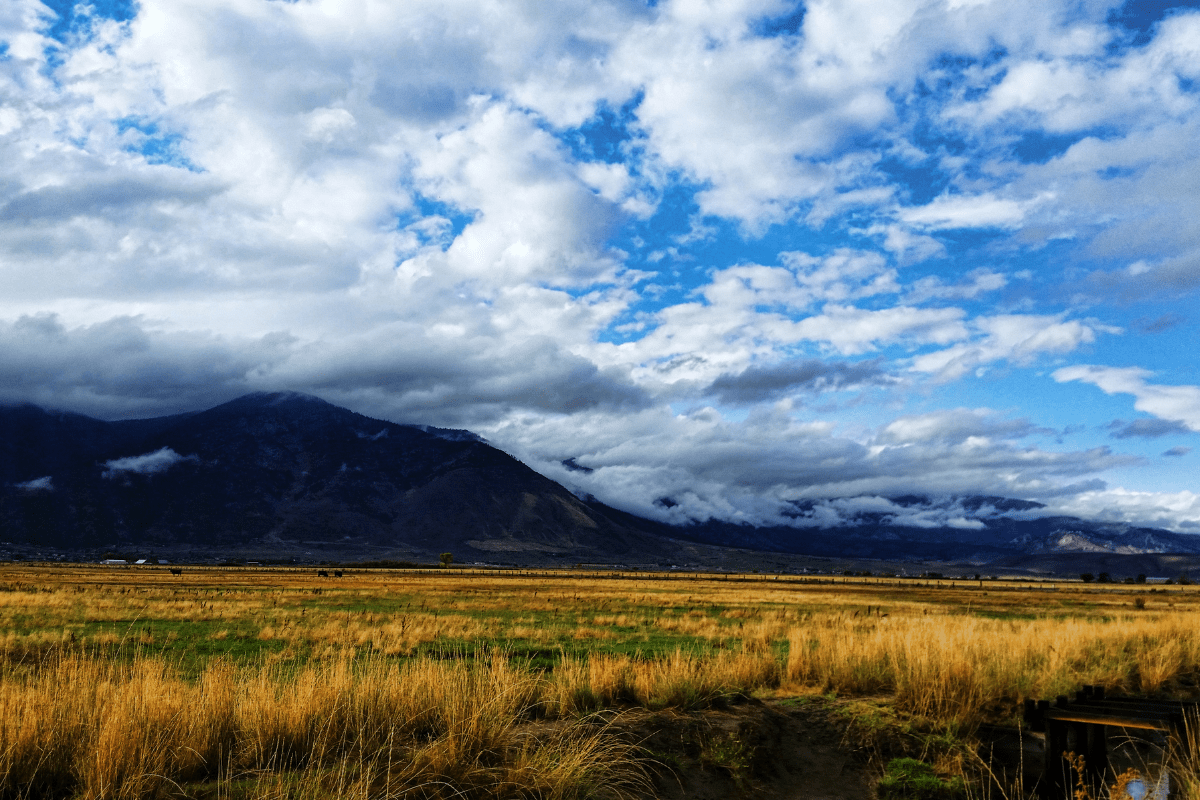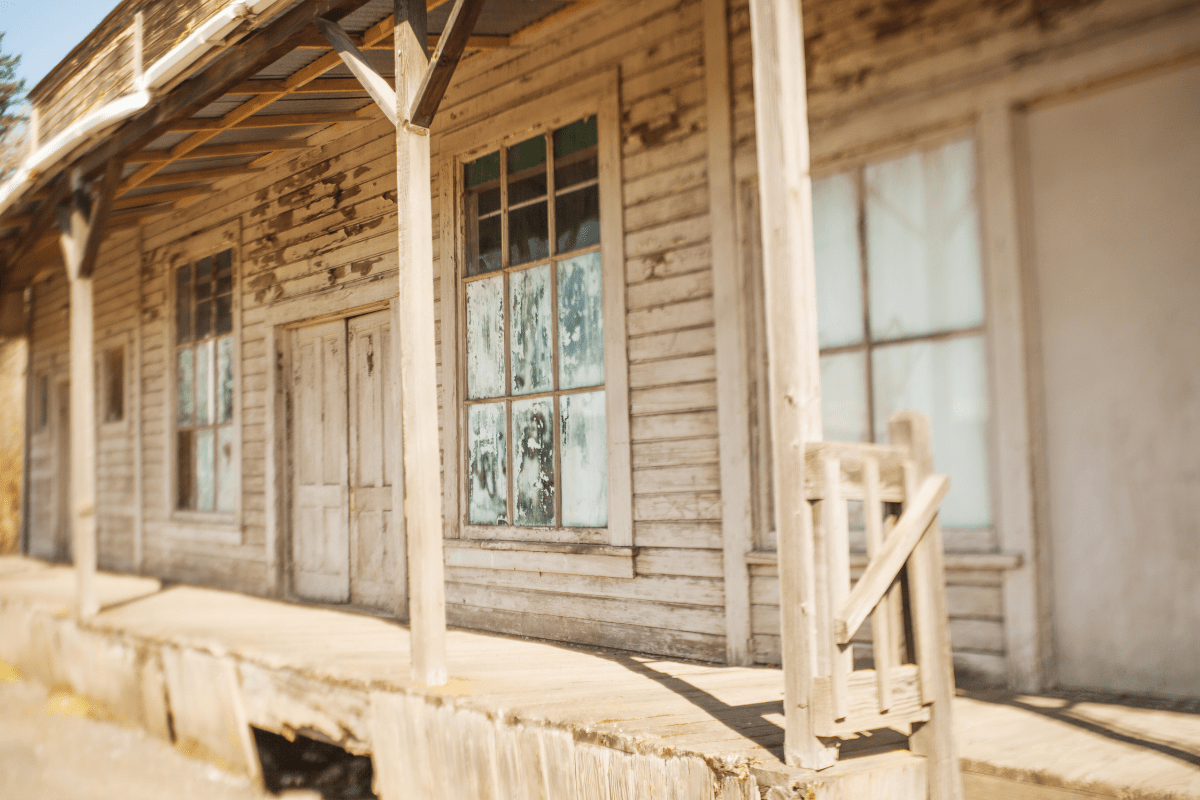Forget everything you think you know about Nevada being just casinos and desert. This state packs more history per square mile than a Ken Burns documentary marathon, with ghost towns that make the Wild West look tame and engineering marvels that'll make your jaw drop faster than a bad poker hand. From 4,000-year-old rock art to mob museums, Nevada's historic sites tell America's story in ways that'll have you planning road trips before you finish reading this.
The big-ticket attractions that live up to the hype
Let's start with the heavy hitters… the places your friends will actually recognize when you post photos.
Hoover Dam proves humans can be ridiculously ambitious
Standing at the edge of Hoover Dam feels like staring at humanity's report card from the 1930s, and somehow we got an A+ in "Making Nature Behave." This concrete behemoth rises 726 feet between Nevada and Arizona, attracting nearly seven million visitors annually who come to gawk at Depression-era determination made manifest.
Here's what you need to know before you go:
The Guided Dam Tour costs $40 per person, but here's the catch… you can't buy tickets online. Your whole group needs to be present at the ticket window, which means coordinating bathroom breaks beforehand is essential. Tours routinely sell out by noon, so showing up at 2 PM with dreams of exploring construction tunnels will leave you disappointed.
For a more budget-friendly option, the Power Plant Tour runs $25 for adults and actually accommodates wheelchairs throughout. You'll descend through original construction tunnels to viewing platforms overlooking generators that could power your entire neighborhood for a decade.
Practical tips that'll save your sanity:
- Arrive between 9-11 AM or 2:30-3:45 PM for smaller crowds
- The parking garage charges $10 (459 spaces fill fast)
- Security checkpoints ban knives of any size
- Boulder City nearby still prohibits gambling (yes, really)
Pro tip: The adjacent Mike O'Callaghan-Pat Tillman Memorial Bridge offers free pedestrian access for photography. Those Instagram shots of the dam from above? That's where they happen.
Valley of Fire will ruin you for other state parks
About 50 miles northeast of Las Vegas lies Nevada's oldest state park, where 46,000 acres of red sandstone formations look like Mars decided to vacation on Earth. The real treasures here are petroglyphs dating back 4,000 years, created by Basketmaker and early Pueblo peoples who clearly had more artistic talent than most of us.
Valley of Fire charges fifteen dollars for non-residents ($10 for Nevada folks), which feels like highway robbery until you see your first ancient rock art panel. Then it feels like you should probably pay more.
The park's crown jewels include:
Atlatl Rock features a 100-foot sandstone monolith with metal stairs leading to petroglyphs depicting the ancient spear-throwing tool. Yes, there's a staircase bolted to a rock. No, it's not as sketchy as it sounds.
Mouse's Tank Trail offers an easy 0.7-mile round trip packed with the park's highest concentration of accessible petroglyphs. The trail leads to a natural rock basin where Paiute outlaws once hid from authorities, because even criminals appreciate good scenery.
Critical summer warning: Many trails close entirely from May 15 through September 30 when temperatures regularly exceed 115°F. The park has documented numerous heat-related emergencies, and nobody wants their vacation to include an ambulance ride.
The visitor center stays open daily from 9 AM to 4 PM, providing interpretive exhibits and blessed air conditioning. Cell phone service remains spotty throughout the park, so download those offline maps unless you enjoy the authentic pioneer experience of being hopelessly lost.
Virginia City keeps the Wild West weird
America's largest historic district still operating today, Virginia City sits at 86 South C Street like a perfectly preserved time capsule that someone forgot to bury. The 1859 silver discovery here transformed a dusty mining camp into one of America's wealthiest cities, financing the Union during the Civil War with enough precious metal to make Scrooge McDuck jealous.
The town operates on a Comstock Adventure Pass system, letting visitors choose three or more attractions for discounted pricing. Individual site costs vary, but the pass makes sense if you're planning to explore beyond the saloons (though the saloons are pretty great too).
Must-see Virginia City experiences:
The Fourth Ward School Museum holds the honor of being America's only surviving four-story Victorian Second Empire wooden school building. That's a lot of qualifiers, but the building backs them up with style. Open seasonally from May through December.
Piper's Opera House hosted everyone from President Grant to Mark Twain, and now offers guided tours with elevator access for visitors who'd rather not tackle 1860s staircases.
The Virginia & Truckee Railroad runs from May through October, taking passengers through high desert landscape that hasn't changed much since the silver boom days.
Peak visitation runs from May through October when all attractions operate. The town maintains full tourist services year-round, with lodging options including the historic Silverland Inn and the 1859 Tahoe House Hotel. For current information about accessibility and seasonal closures, call visitor services at 775-847-7500.
Museums that make learning feel like cheating
Nevada's museums pack more fascinating weirdness per square foot than a Vegas magic show, minus the overpriced drinks.
Nevada State Museum occupies an actual mint
Housed in Carson City's former U.S. Branch Mint at 600 North Carson Street, this museum lets you explore where nearly $50 million in gold and silver coins were produced between 1870 and 1893. Those coveted "CC" mint marks that make coin collectors lose their minds? They happened right here.
Admission runs ten dollars for adults while children 17 and under enter free, making this the best educational bargain since public libraries. Open Tuesday through Sunday from 8:30 AM to 4:30 PM.
The museum's undisputed star is Coin Press No. 1, which still operates demonstrations Saturdays from 11 AM to 3 PM. Watching docents create medallions from silver planchets using original equipment feels like time travel, except with better hygiene standards.
Other treasures filling the former mint:
- Complete collection of Carson City Morgan dollars
- World's largest exhibited Columbian mammoth
- USS Nevada's silver service (5,000 ounces!)
- Fey slot machines and Old West firearms
Free parking fills quickly in the small lot directly west of the museum. A larger public lot on Curry Street's west side offers additional spaces, though street parking limits hit two hours.
Lost City Museum preserves what Lake Mead drowned
Built by the Civilian Conservation Corps in 1935 on an actual Ancestral Puebloan archaeological site, the Lost City Museum at 721 South Moapa Valley Boulevard in Overton preserves artifacts from settlements that Lake Mead's creation flooded. Talk about adding insult to injury… first your civilization collapses, then 700 years later someone builds a lake on top of it.
The museum charges eight dollars for adults and seniors, with children 17 and under entering free. Operating Wednesday through Sunday from 8:30 AM to 4:30 PM, the fully wheelchair-accessible facility sits 65 miles northeast of Las Vegas.
Standout features include:
The reconstructed pueblo cluster sits on original foundations, letting visitors experience authentic ancient architecture while pondering how people survived here without air conditioning. Gallery Two features an exposed archaeological excavation visible through the floor, demonstrating professional archaeological methods while preserving the dig exactly as found.
The museum even provides dog kennels for pet owners, because apparently ancient Puebloans were more accommodating than most modern attractions. The location makes it an ideal stop when visiting Valley of Fire State Park, just 16 miles south.
The Mob Museum glorifies organized crime responsibly
Occupying the restored 1933 federal courthouse at 300 Stewart Avenue where the Kefauver Hearings investigated organized crime, The Mob Museum manages to make criminal history both educational and entertaining. Admission starts at $34.95, which seems steep until you realize they have the actual St. Valentine's Day Massacre wall. Yes, the real one. With authentic bullet holes.
Ghost towns that refuse to disappear completely
Nevada's ghost towns offer the peculiar pleasure of wandering through failure on a massive scale, except these failures photograph beautifully.
Rhyolite stands as Nevada's most photogenic corpse
Six miles west of Beatty on State Route 374, Rhyolite offers free 24/7 access to ruins that perfectly capture the boom-bust cycle of Western mining towns. Founded in 1904 after prospectors discovered high-grade gold ore, the town exploded to a population between 5,000 and 10,000 residents by 1907, complete with a stock exchange, opera house, and even an ice plant.
Then the 1907 financial panic hit, and Rhyolite collapsed faster than a house of cards in a windstorm.
Today's must-see ruins include:
The Tom Kelly Bottle House stands as one of the West's most unusual structures, built from 50,000 beer and medicine bottles in 1906. Paramount Pictures restored it in 1925, presumably because even movie studios recognized peak weird when they saw it.
The John S. Cook Bank Building ruins might be America's most photographed ghost town structure, its ambitious stone construction mocking the temporary nature of human ambition.
The Las Vegas & Tonopah Railroad Depot, built in mission style in 1908, later served as a casino and museum, because Nevada never met a building it couldn't put slot machines in.
Photographers should target golden hour (one hour before sunset) when dramatic shadows emphasize the ruins' weathered textures. The adjacent Goldwell Open Air Museum features contemporary sculptures including a ghostly "Last Supper" that adds surreal artistic counterpoint to the historic ruins.
Beatty, six miles away, provides the nearest services including lodging at the Stagecoach Inn and the famous Death Valley Nut and Candy Company, where you can buy dates and contemplate mortality.
Berlin-Ichthyosaur mixes mining history with prehistoric marine life
Only in Nevada would someone create a state park combining an 1890s ghost town with 225-million-year-old marine reptile fossils. Located 23 miles east of Gabbs at elevations approaching 8,000 feet, this remote park charges $5 for Nevada residents and $10 for out-of-state vehicles.
The park offers two completely different experiences that somehow work together:
Fossil House tours run at 10 AM and 2 PM for $5 per adult, operating weekends from April through Memorial Day, daily through Labor Day, then weekends again through October. The shelter protects North America's most abundant concentration of ichthyosaur fossils, which held the world record for largest specimens until 2004. When tours aren't running, large viewing windows allow year-round fossil peeping.
The Berlin ghost town features over 80 interpretive signs along a self-guided walking tour through buildings preserved in "arrested decay," which is park-speak for "we're letting them fall apart artistically." The Diana Mine remains accessible for exploration, and the original cemetery contains Berlin's former residents who probably didn't expect to share their eternal rest with giant fossil lizards.
Essential warnings for Berlin-Ichthyosaur:
- Winter snow can make access impossible
- No services within 23 miles
- Arrive with full gas tank
- Pack water and food
- Cell service? Don't make me laugh
Military outposts and cultural heritage sites
Nevada's lesser-known historic sites offer fascinating glimpses into military history and Native American culture without the crowds.
Fort Churchill preserves Nevada's Civil War contribution
Nevada's first and largest military outpost, Fort Churchill State Historic Park stands south of Silver Springs along US Route 95 Alternate, about 40 minutes from Carson City. Built in July 1860 following conflicts with local Paiute bands, the fort protected early settlers, Pony Express riders, and telegraph lines while housing an average of 200 Union soldiers during the Civil War.
Day use fees run $5 for Nevada residents and $10 for non-residents, providing access to ruins preserved in "arrested decay" since the fort's 1869 abandonment and $750 auction sale. That's right… the entire fort sold for less than a modern mortgage payment.
The self-guided fort trail winds through 15 significant structures, while a 2.2-mile nature trail connects to Buckland Station along the Carson River. Twenty campsites under cottonwood trees offer tables, fire rings, and grills without hookups for $15-20 per night.
Buckland Station Museum, built in 1870 from fort materials by someone with excellent recycling instincts, opens weekends from 10 AM to 2 PM with just $1 admission.
Pyramid Lake Paiute Tribe Museum shares sacred connections
The Pyramid Lake Paiute Tribe Museum at 709 State Street in Nixon offers free admission to exhibits celebrating the Numu people's connection to Pyramid Lake. Located 35 miles north of Reno, the museum opens Tuesday through Saturday from 10 AM to 4 30 PM.
Strict permit requirements govern all lake access, with day use, fishing, camping, and boating permits available online at pyramidlake.us or at the ranger station. Several sacred areas remain permanently closed to public access, including the Needles area, Anaho Island, and the iconic Pyramid and Stone Mother rock formations.
The museum gift shop features authentic handmade Native American items, with all purchases supporting tribal cultural programs.
Las Vegas beyond the neon
Even Sin City preserves its history, though you might have to look past the slot machines to find it.
The Neon Museum rescues vintage Vegas
The Neon Museum at 770 Las Vegas Boulevard North collects over 200 vintage casino signs in its outdoor Boneyard, creating a glowing graveyard of Vegas's electric past. Hours vary seasonally from 2 PM to midnight depending on temperature, because nobody wants to tour hot metal in 115-degree heat.
Guided tours get cancelled when temperatures exceed 100°F, though self-guided access continues for the heat-tolerant. The Brilliant! audiovisual show projects animated displays onto historic signs after dark, bringing dead neon back to spectacular life.
Las Vegas Mormon Fort marks the beginning
The Las Vegas Mormon Fort State Historic Park at 500 East Washington Avenue preserves Nevada's oldest standing structure from 1855. Charging just $3 admission and open Tuesday through Saturday from 8 AM to 4:30 PM, the fort's adobe walls chronicle Vegas's transformation from Mormon way station to whatever it is now.
Essential desert survival tips
Because nothing ruins a historic site visit faster than heatstroke or getting stranded.
Summer temperatures regularly exceed 115°F at lower elevations, with Valley of Fire closing most trails from mid-May through September. Winter brings snow to higher elevations around Virginia City and Berlin-Ichthyosaur, potentially making roads impassable. Plan accordingly or prepare for disappointment.
Desert exploration essentials:
- One gallon water per person daily
- Downloaded offline maps (seriously)
- Full gas tank before leaving civilization
- First aid kit and emergency supplies
- Sunscreen (more than you think)
- Snacks (desert hunger hits different)
Peak visitation at popular sites happens during spring and fall when temperatures moderate. Early morning arrivals help avoid crowds year-round, plus you get that sweet golden hour light for photos.
Remember: removing artifacts from any historic location violates federal law with substantial penalties. Take only pictures, leave only footprints, and try not to leave those footprints on the actual petroglyphs.
Nevada's historic sites preserve layers of Western American history that textbooks barely mention. From ancient rock art through atomic age engineering, these twelve destinations offer authentic experiences that illuminate how the American West really developed… messy, ambitious, and never quite according to plan. Pack plenty of water, charge your camera, and prepare for adventures that'll make your Instagram followers think you've gotten way more interesting.





